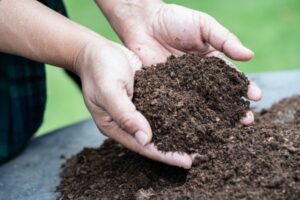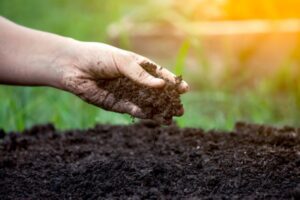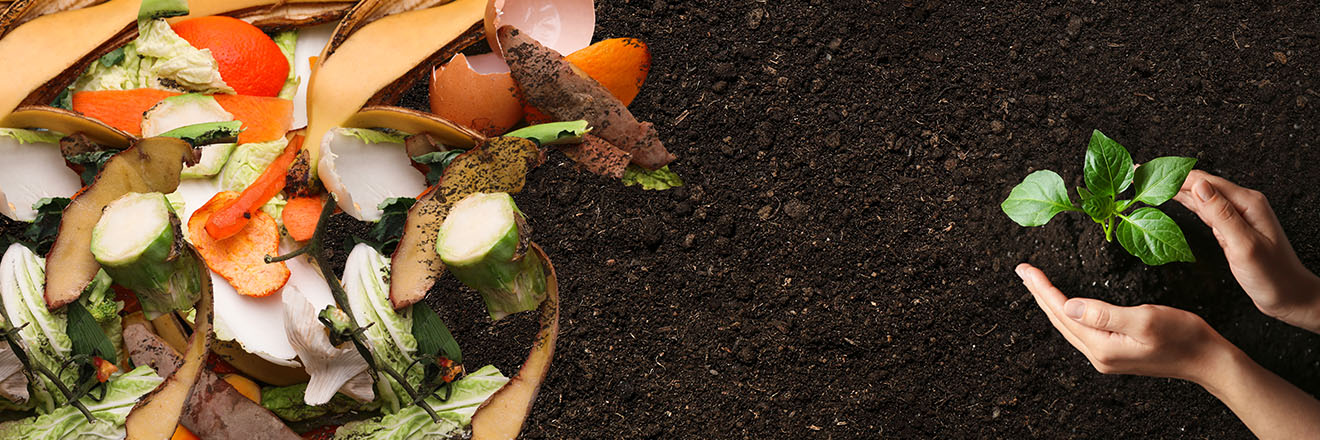
Landscaping Supply Soil Amendments:
Compost & Peat
 Simply put, compost is actually what you get when organic material (like food scraps, leaves, and animal products) decomposes properly. It’s a nutrient rich, dirt-like material that can be used to enrich soil and nourish plant growth.
Simply put, compost is actually what you get when organic material (like food scraps, leaves, and animal products) decomposes properly. It’s a nutrient rich, dirt-like material that can be used to enrich soil and nourish plant growth.
Compost provides you with rich organic matter that does wonders to improve the quality of your garden soil. Compost is most well-known for its contribution to healthy and resilient plant growth. It has a number of complementary benefits to plant growth, among them that it balances soil density, adds and retains nutrients, and discourages disease, pests and weeds.
Compost can be used as a soil amendment or as mulch. As a soil amendment, mix or till in two to four inches of compost to the top few inches of your soil.
As a mulch, loosen the top two to three inches of soil and add a two-inch layer of compost on the surface, a few inches away from plant stems and tree trunks. It’s best – and easiest to have your compost blended in with your topsoil when you’re creating a new garden area.
The main difference between compost and fertilizer is their purpose. Compost feeds the soil, while fertilizer feeds the plants. Because compost doesn’t contain everything a plant needs for good nutrition, you may consider using an organic plant fertilizer as well. Organic fertilizer is made from natural animal and plant waste products and requires less processing (more energy efficient). They are considered “slow release” because they depend on the micro-organisms within the soil to break them down and release their nutrients.
Keep in mind that inorganic (chemical) fertilizers can cause damage to the beneficial microbes and bacteria in the soil / compost mix. These micro-organisms are responsible for releasing nutrients to plants.
Also, the composition of these chemical fertilizers is mostly salts (because they need to be water soluble to release their nutrients into the ground). Therefore, they increase the concentration of salt in the soil and retain moisture. However, the salts bind with water making it unavailable for plants.
Whether you simply spread compost on the surface of the soil or work it in, your garden plants and landscape will grow healthier and stronger thanks to the addition.
Your lawn or garden benefits from compost in the following ways:
- Incorporates organic matter to feed micro-organisms and macro-organisms that maintain a healthy soil food structure
- Enriches soil with nutrients for plant growth
- Releases nutrients slowly so they don’t leach away as some synthetic fertilizers do
- Promotes drainage and aeration in clay soil
- Enhances moisture and nutrient retention in sandy soil
- Reduces soil compaction
- Inhibits erosion
- Suppresses soil-borne diseases and pests
- Attracts earthworms (nature’s best soil builders)
- Attracts beneficial organisms to the soil and reduces the need for pesticides and fertilizers
- Compost helps bind clusters of soil particles, called aggregates, which provide good soil structure. Such soil is full of tiny air
- channels and pores that hold air, moisture and nutrients
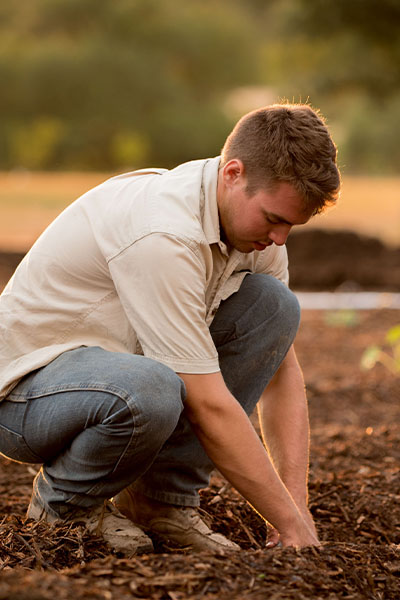
Tim Wallace Soil Mix Supply Compost Options
- Organic Compost
- Mushroom Compost
- Composted Horse Manure
- Purple Cow Classic® Compost.
Organic Compost
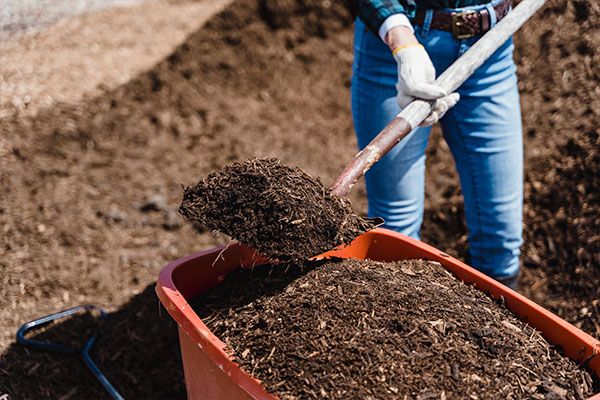 Organic Compost is decomposed organic material, such as leaves, grass clippings, and kitchen waste. It provides many essential nutrients for plant growth and therefore is often used as fertilizer. Organic Compost also improves soil structure so that soil can easily hold the correct amount of moisture, nutrients and air. It improves the texture of both clay soils and sandy soils, making either type rich, moisture retentive, and loamy.
Organic Compost is decomposed organic material, such as leaves, grass clippings, and kitchen waste. It provides many essential nutrients for plant growth and therefore is often used as fertilizer. Organic Compost also improves soil structure so that soil can easily hold the correct amount of moisture, nutrients and air. It improves the texture of both clay soils and sandy soils, making either type rich, moisture retentive, and loamy.
Organic materials used in this product include a mixture of brown organic material (dead leaves, twigs) and green organic material (lawn clippings, and vegetable scraps). Brown materials supply carbon, while green materials supply nitrogen. Gardeners have long referred to organic compost as “Black Gold”.
Organic Compost is an all-purpose amendment that can be used in the garden, planting bed or lawn.
Mushroom Compost
Unlike the name may suggest mushroom compost does not contain any mushrooms, rather, it is a by-product from mushroom farming; the growth medium of mushrooms that is removed after the mushrooms are harvested. The more apt name for it is mushroom soil. The substrate in which mushrooms are grown is based on a mixture of hay, straw, horse manure, peat moss, and other natural organic substances.
Just like organic compost, mushroom compost is often touted as “black gold”. It acts as both a plant fertilizer and soil amendment that can benefit your plants when used properly.
Mushroom Compost for use in the garden:
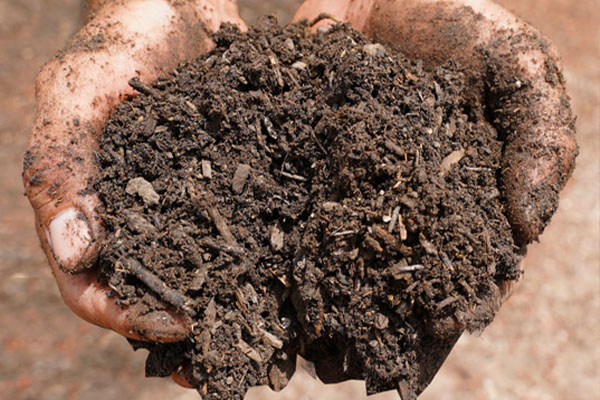 Mushroom compost will improve the water retention and worms love moist soils. Having a soil that encourages earthworms to set up home in your garden is extremely beneficial to your plants, as worms improve the soil structure, improve drainage, and allow roots to be able to extract nutrients from the soil more effectively.
Mushroom compost will improve the water retention and worms love moist soils. Having a soil that encourages earthworms to set up home in your garden is extremely beneficial to your plants, as worms improve the soil structure, improve drainage, and allow roots to be able to extract nutrients from the soil more effectively.
Mushroom compost is fantastic for the majority of vegetables, especially since food crops don’t like acid soil conditions. In addition, the liming effect of mushroom compost can be beneficial for vegetable gardens.
However, mushroom compost should not be used for germinating garden seeds or as a media for seedling plants, as before they are fully established they can be sensitive to high salt levels. There are also some plants that are sensitive to salt in soils even once mature, and these include blueberries, camellias, and azaleas. Beans, celery, cucumbers and radishes are also salt-sensitive. You can still use mushroom compost with any of these or similar salt-sensitive plants, but be certain to combine with organic compost or topsoil at a ratio of no more than 50%.
Mushroom Compost for use in the lawn:
- For a new lawn: When starting a lawn from scratch, mushroom compost helps give the grass seed a kick start when mixed into the existing soil. Spread about 2 inches of mushroom compost over the area, then, rototill it into the top 4 to 6 inches of native soil. The compost adds nutrients while helping with drainage in compacted soils. There’s no need to add topsoil in this situation as the compost gives the grass seed more of what it needs to grow than straight topsoil, according to the Pennsylvania State University plant science department. However, if you prefer not to have to rototill your entire yard, purchase our ready blended Enriched Topsoil Mix – 50% topsoil and 50% mushroom compost.
Mushroom compost also works when laying sod. The soil preparation should be prepared as for new lawns. You can also add a layer or mushroom compost under the sod. The soil should be moistened before sod is laid. After laying sod, uniformly apply 1/2 inch mushroom compost on the seams for improved rooting. - For established lawns:You can renew an older lawn using mushroom compost as a top-dressing. Mushroom compost is excellent as a top-dressing for grass seeding as grasses aren’t especially salt-sensitive. Instead of covering grass seed with topsoil, use mushroom compost. This helps hold moisture against the seeds so they can germinate faster while preventing the wind from blowing away the seeds and birds from eating them. The seeds have instant access to the nutrients in the compost.
First, spike aerate the lawn. Then, uniformly spread about 1/2 inch layer of mushroom compost over the lawn’s surface. Next, spread your grass seed and work into the lawn. A flexible rake is a perfect tool for this. Lastly, water thoroughly and often until the seed germinates. - For bare spots:Bare patches can be fixed by spreading mushroom compost on top of existing soil as a planting medium. Loosen the native soil in these areas first while removing any unwanted grass or weeds. Then spread up to an inch of compost – but be sure to break up the compost into smaller particle size. The larger particles help improve soil quality when mixed with the soil, but when added to the top of a bare patch, the smaller particle sizes break down and provide nutrients faster. Sow seed directly into the compost.
Composted Horse Manure
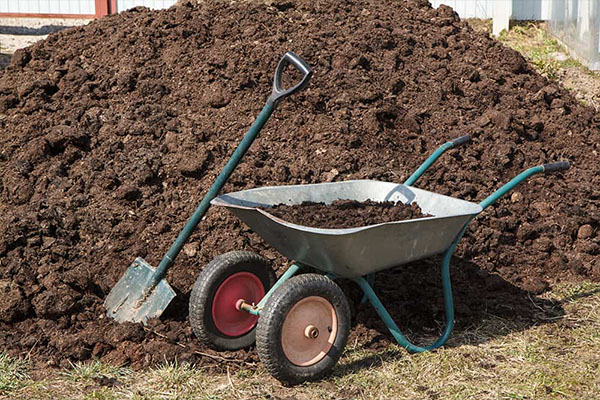 Horse owners tell us that a 1,000 pound horse produces 40-50 pounds of manure every day. That translates into nearly one TON of manure a month! Fresh manure should not be used on plants, because it can burn their roots. However, well-aged manure that has been combined with stall bedding matter like sawdust and straw which has been allowed to dry and “compost”, can be worked into the soil without the worry of burning. Our sourced horse manure has been aged and turned regularly for 2 – 3 months, until the compost looks like soil and has lost its “manure” smell.
Horse owners tell us that a 1,000 pound horse produces 40-50 pounds of manure every day. That translates into nearly one TON of manure a month! Fresh manure should not be used on plants, because it can burn their roots. However, well-aged manure that has been combined with stall bedding matter like sawdust and straw which has been allowed to dry and “compost”, can be worked into the soil without the worry of burning. Our sourced horse manure has been aged and turned regularly for 2 – 3 months, until the compost looks like soil and has lost its “manure” smell.
Horse manure contains organic matter which, when applied to plants in the garden can give them the best start and enable them to grow more quickly and become stronger and healthier too.
Horse manure is Nitrogen-rich though it doesn’t have particularly high quantities of Phosphorus and Potassium, which is why it can work best on non-flowering plants. And yes, it can also be used as a top-dressing for your lawn.
For best results, composted horse manure should be given to nitrogen-hungry plants such as corn, potatoes, garlic, and lettuce and it can also be fantastic for boosting your lawn’s grass. However steer clear of adding horse manure to flowering and fruiting plants such as tomatoes, and peppers. Or if you do decide to use it, combine it with organic compost so it doesn’t inhibit the growth of fruit and flowers.
Purple Cow Classic Compost
 Purple Cow Classic Organic Compost is a time tested, and proven way to add beneficial microbes, carbon and balanced nutrients to your soil. Classic Compost improves soil structure and porosity, creating a better plant root environment. It allows plants to more effectively utilize nutrients, while reducing nutrient loss by leaching and enables soils to retain nutrients longer. Also containing humus, Classic assists in soil aggregation and makes nutrients more available for the plant. This 100% plant-based and organic product is OMRI Listed for organic production.
Purple Cow Classic Organic Compost is a time tested, and proven way to add beneficial microbes, carbon and balanced nutrients to your soil. Classic Compost improves soil structure and porosity, creating a better plant root environment. It allows plants to more effectively utilize nutrients, while reducing nutrient loss by leaching and enables soils to retain nutrients longer. Also containing humus, Classic assists in soil aggregation and makes nutrients more available for the plant. This 100% plant-based and organic product is OMRI Listed for organic production.
From the Purple Cow website:
We take pride in our products’ ability to not only improve the beauty, quality, and volume of the plants your customers grow, but also to improve the health of the soil they grow in. Whether it’s a perennial flower garden, or a raised bed of vegetables, Purple Cow products give back to our consumer by providing incredible results, and a healthier world in which to enjoy them. We are a premium product, and priced accordingly. However, once customers try our products, they never use anything else.
Mix into soil for gardens, beds, or mixes, or use to establish new and maintain existing lawns.
Compost vs. Peat
Compost consists of decomposed organic material, but it decomposed in the presence of the air. Meanwhile, for peat to form, the air is absent. Compost is the result of decayed organic materials like grass clippings, plant materials, leaves, vegetable scraps and sometimes, animal manures. Each gardener can make their own compost or source it locally, ready-made.
We offer Peat as a component product in several of our soil mixes for the lawn and garden and as a stand-alone soil amendment. The peat we use is sourced from the peat bogs of northern Minnesota.
Although both are considered soil amendments, there are some differences between peat and compost:
Peat
- Possess a low pH (ie. Acidic)
![garden soil]()
- Does not compact
- Holds moisture better than compost
- Has a uniform composition
- Poor in microorganisms
- Contains few nutrients
- Is weed seed free
- Can be more expensive than compost
Compost
- pH neutral
- Often self-compacts
- Doesn’t hold water as well as peat
![soil blend]()
- Depending on the source doesn’t have a uniform composition
- Rich in microorganisms
- Made from recycled organic matter
- Holds more nutrients
- Not always weed-seed free
- An economical amendment when purchased, or – can be free if created on your own
Peat is not commonly used as a standalone product. In fact, by itself it’s not a good growing medium beyond starting seeds from scratch. Even though peat can help your soil retain nutrients, it hardly contains any nutrients at all in and of itself. Peat also doesn’t add sufficient nutrients to the soil for healthy plant growth on its own so you have to add other organic components like topsoil along with it.
Gardening and lawn care experts seem to unanimously agree, that peat used in a ratio of no more than 3 to 1 is the best soil blend combination. We prefer a slightly more conservative approach and blend our soil mixes made with peat at a rate of 25% peat. This percentage amount provides the moisture and 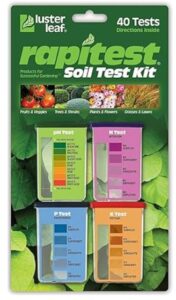 nutrient retention qualities of the peat that complement and improve the other organics used in the blend while not making drastic changes to the soil’s pH.
nutrient retention qualities of the peat that complement and improve the other organics used in the blend while not making drastic changes to the soil’s pH.
If you’re considering using peat on your lawn, we recommend that you do a pH test of your soil before and after to measure results. (Soil test kits are sold at many home-improvement garden centers and often can be done for you through your state or county agriculture extension.) Ideal pH for both lawns and vegetable gardens should be between 6.5-7.0 – slightly acidic.
Landscaping Supply Soil Amendments: Contact Us Today
Both Compost and Peat are known for their contribution to healthy and resilient plant growth. With the right soil amendments from Tim Wallace Soil Mix Supply, you can improve your lawn, planting bed or garden with rich organic matter that does wonders to boost nutrients, encourage growth and production and obtain the best results. Contact us at (630) 759-1080 to further discuss the ideal soil amendment for your planting needs!

